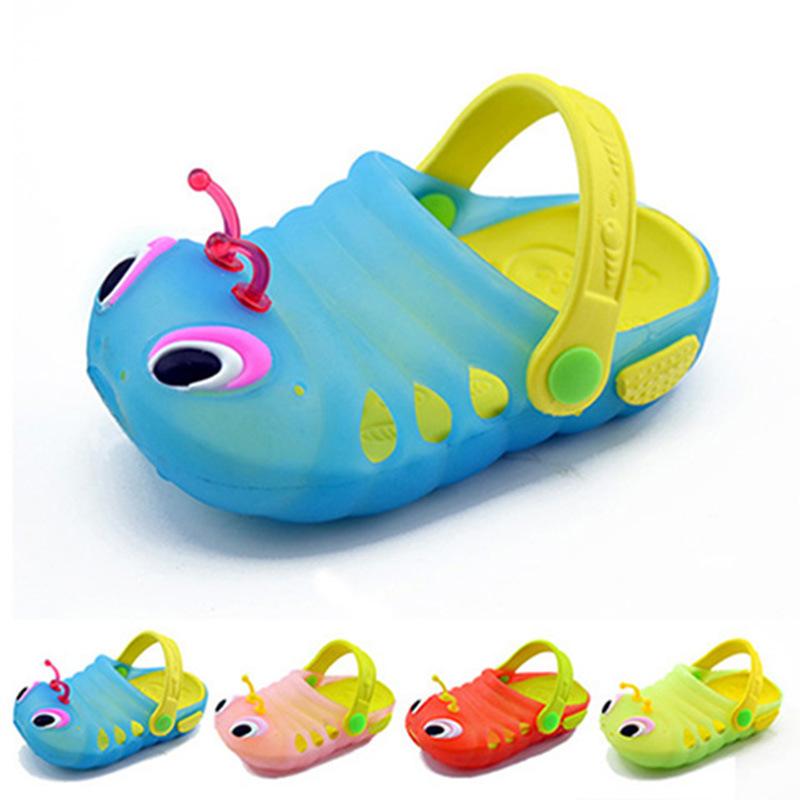Buying the right shoes for kids is very important because they are still growing, developing, and may be slightly lacking in the coordination department. Because a child’s feet are tender and still growing, they need everyday protection. Shoes help by preventing slips, falls, and providing padding for active kids as they run, jump, and climb, on a daily basis. Shoes protect against serious injury to a child’s feet.
As soon as children start going outside they need some form of foot protection. Babies who are not walking yet don’t necessarily need shoes, but their feet need to be kept warm and protected. Toddlers will need real shoes before they start wandering around on their own. Here are nine tips to help you select appropriate shoes for your children:
- Check Shoes Often – Younger children seldom verbalize when their shoes are starting to feel too tight. Monitor your child for other indications such as refusing to wear certain shoes, or crying every time they are put on. Shoes that are too small will prevent a child’s feet from developing properly and may make walking painful.
- Measure For The Right Size – Quality shoe stores will measure a child’s foot fort both length and width, but many department and discount stores have a “serve yourself” policy and merely provide a few benches and low mirrors in the shoe department, and the rest is up to you. If you’re not going to a shoe store that measures children’s feet, it may help to trace your child’s feet on paper and bring those cut outs with you to compare against the soles of the shoes. Flashy shoes with cartoon characters, super heroes and other embellishments, may be your child’s first choice, but don’t let those things sway you. Have your child try on a few pairs to see which are the most comfortable and sturdy. Allow about an extra half inch in the toe for growth. Have your child walk back and forth and watch for signs the shoes are too big, such as gaps around the top of the shoe or slippage of the back of the heel. Keep in mind, not all shoes are manufactured the same, so your child may take one size in a certain style, and a half size bigger in another style.
- Avoid Shoes With No Backs – Although tiny flip flops and sandals are cute as can be, they don’t stay on well. They may slip off while your child is walking or running in them and cause the child to trip or fall. If you are determined to buy this style, look for sandals with some protection for the heel, with a strap, buckle, or velcro closure around the ankle to keep sandals from slipping off. Kids loose enough things as it is, surely you don’t want to look for lost flip flops every day!
- Get Shoes That Are Easy To Put On – Younger children may not be able to tie shoes or to do it quickly. This can be exasperating when trying to leave the house with more than one child. Look for shoes with velcro or stretchy laces so kids can put them on unassisted. Slip on canvas shoes with elastic side gores may also work if they don’t slip off easily. You might want to get a pair of tie shoes and a pair of “easy” for occasions when you child needs to get ready in a hurry.
- Get Shoes With Good Traction – To help children with their lack of coordination, and help prevent falls look for shoes with a patterned or textured sole for good traction.
- Look For Flexible Soles – Research has shown children need more flexible soles. Children’s feet still have small bones and soft tendons. Stiff soles can prohibit proper growth. Very flexible soles do not offer much protection or support. The more active your child is the more supportive the soles should be.
- Get Breathable Shoes – Look for shoes that are made of breathable materials like canvas, or that have vents. Most kids are very active and keep their shoes on for the majority of the day. Their shoes should allow their feet to breathe and get air.
- Save Money On Shoes – Kids feet are constantly growing, so they’re going to go through a lot of shoes. Before children reach 3 years old, their feet grow a half size every 2-3 months. Kids, 3 to 6 years old, grow half a size every 4 to 6 months. After the age of six the growth rate slows down a little, but some kids will go through more than 2 pairs of shoes each year because they wear them out so quickly. If you want to save money, don’t have more than two pairs of shoes per child at one time. This reduces the number of shoes you will need to buy every time they wear out or outgrow them. Another option is to shop shoe sales. While there, buy the child’s current shoes size as well as another pair a half size larger. This not only saves you the hassle of shopping twice, but you’ll save on two pairs of shoes in the process.
- Get Quality For Older Children – It’s worth the money to buy quality shoes that will last awhile, once your child’s growth rate slows down. The price of one sturdy pair of shoes is still less than the price of two less expensive pairs. Young children who outgrow their shoes quickly don’t need expensive shoes because they will be replaced before they wear their current shoes out.
Happy Shopping !!
AsheBridge Children’s Academy offers quality preschool education for our communities in Apex, Cary, Fuquay, Holly Springs, Angier, and surrounding areas. Contact us today to learn about all the fun things that set us apart from the other daycare and childcare centers.

